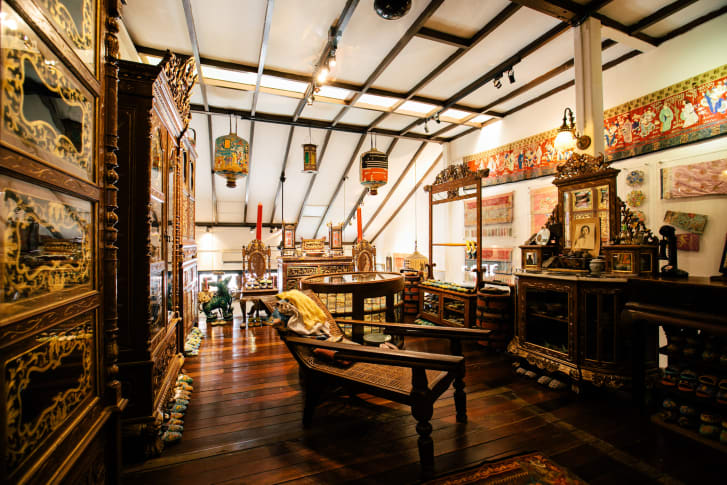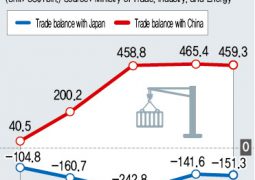Peranakan antiques – Singaporean Malaysian collector driven by ‘pure insanity’

1 / 15 photos –Alvin Yapp is a collector and owner of the Intan, a Peranakan heritage museum in Singapore. Scroll through the gallery to see more images from its collection. Juliana Tan for CNN
Peranakan antiques collector driven by ‘pure insanity’
SHARE
Written by Emiko Jozuka, CNNSingapore
When Alvin Yapp was 14 he saw a play in Singapore that changed his life. It was a Peranakan production that focused on the fraught and comic relationship between a mother and her daughter-in-law. It gave the teen a glimpse of his heritage, but as he didn’t speak Malay, he didn’t understand the witty repartee.
“Everyone was laughing their hearts out, but I was quite clueless,” said Yapp, an advertising director, who now runs his own Peranakan museum. “I was just fascinated by all the material objects on the stage.”
Those props were inspired by Peranakan objects, treasured items made specifically for the descendants of Chinese settlers who journeyed from the mainland to Southeast Asia and married Malay women between the 15th and 18th centuries.
He started scanning newspaper advertisements for Peranakan items posted for sale, and admits “pure insanity” drove him to collect more and more. Over three decades, Yapp has amassed everything from ornate lunch boxes and beaded slippers to golden jewelry and porcelain vases.
More than 5,000 objects created between 1890 to 1942 now sit inside his museum, neatly arranged to give visitors the feeling that they’re in an authentic Peranakan home.
“My aim is to make culture relevant today … (and) ask what we can learn from the Peranakan community,” said Yapp.
‘Antiques whisperer’
Yapp has given private tours of the Intan to everyone from the Singaporean deputy prime minister to dog whisperer Cesar Milan.
“Cesar Milan came and was so adorable. He said, ‘Alvin, I am the dog whisperer, but you are the Peranakan whisperer. You have a relationship with every single piece, you talk to the antiques.'”
The rows of multicolored, beaded slippers that frame Yapp’s staircase boast European floral motifs, but were made with local beads by Peranakan artisans. While porcelains and clothing all feature intricate motifs and are alive with color, the jewelry takes inspiration from India and is mostly made of gold.
Strewn across the walls are embroidered batik altar cloths, made by tracing a design on fabric with wax. Yapp recalled how many people teased him for collecting altar cloths, saying instead that he should buy batik sarongs which are prized and marketable. “It’s OK to see the beauty in things that other people don’t see.”
Learning process
Yapp didn’t inherit any family heirlooms and admitted to making some early mistakes.
“I bought a lot of junk, fakes and non-Peranakan vintage objects at the beginning,” he said. They included a planter’s chair with a slim coffee table.
Later, Yapp discovered the chair was not Peranakan, but a British-Indian-influenced item used in southeast Asia, which was a feature in many Peranakan households. It remains in the Intan and holds sentimental value for Yapp as it was the first piece he acquired.
Yapp recognizes there are risks involved in leaving objects out in the open, but doesn’t want his collection locked up in a safe where nobody can see it. “We constantly push the boundaries of what a museum can and should be. We host wine parties, weddings and concerts, and do charity work at the Intan,” he said.
Yapp’s efforts have not gone unnoticed. In 2010, the Intan became a member of the Singapore’s National Heritage Board’s museum roundtable — a network formed to build a community around museums in the city-state.
Visitors must schedule appointments at the Intan ahead of time as Yapp prefers to give them a personalized tour through the intimate space.
“At a typical museum, you don’t get the chance to ask questions like, how much did you pay for this? How do you tell real from fake? How do you maintain the pieces? Do you see ghosts? How often do you clean?”
For Yapp, the key to maintaining and promoting interest in Peranakan culture is to keep the museum experience lively and to explore the story of migration and integration.
“I didn’t even need to put descriptions for the objects because I rattle them off like an old friend.”
- Previous Asia trade pact doesn’t reflect India’s interests, decided not to join: PM Modi
- Next Xi Jinping’s message to Hong Kong: You’re stuck with Carrie Lam
















